- Home
- Charles de Lint
Moonheart Page 3
Moonheart Read online
Page 3
When she’d reached the bottom of the box and put everything away on its appropriate table, it was four-thirty. She stuffed the painting and medicine bag into her knapsack, buttoned up her coat and left the store.
Halfway down the block she paused, trying to remember if she’d tested the front door after she’d locked it. Whenever she left the store she invariably stopped somewhere in the first few blocks to think about it. Convincing herself that she had, indeed, tested the door, she went on. By the time she reached home, the momentary sensation of dislocation she’d experienced with the painting had been relegated to a cobwebby corner of her mind. But the painting itself and the medicine bag were still fascinating curiosities and she was looking forward to showing them to Jamie.
Chapter Two
Home was Tamson House.
It took up a large city block and was designed at the turn of the century by Anthony Tamson, Jamie’s grandfather, who, according to his journals, had been looking for “a curious home, reminiscent of a labyrinth, if you will, but with a sense of warmth. Gothic, but not severely so. And it must have towers.” It had, in fact, three of them. Sara’s rooms were in the northwest tower, where Patterson Avenue first touches Central Park.
From O’Conner Street, one of the main downtown thoroughfares that as it approaches Tamson House takes on a more residential attitude, the House appeared to be a block of old-fashioned townhouses set kittycorner to each other with not so much as a fraction of an inch between them. They were a facade, for inside the House ran the length of the block in one long tumble of rooms and hallways, two stories high (in some places three, not including the attics), with steep gables from cornice to ridge, well worn eaves overhung in places with vines, and the odd dormer window. Each front door was serviceable and opened into a hall.
Along the sides of the block, following Patterson on the north and Clemow Avenue on the south, similar facades were presented. The House was not so wide here and, though only one or two of these doors opened, all the mail slots worked. Jamie delighted in the use of many names for his correspondence and used an equal number of addresses with them. Behind these facades were still more rooms that ran the length of the block, connecting the front of the House facing O’Connor, with the back that looked out on Central Park and beyond it, Bank Street.
Central Park was a curiosity in itself, though the Tamsons weren’t responsible for its vagaries. It was a riverlike width of green that had its start at Chamberlain Avenue near the Queensway, and ran southeasterly towards the Rideau Canal, broken only once by Bank Street and again by Clemow, before diving under O’Connor to the canal. Because of the purposefulness of its route, it cut a corner from the rectangle that Tamson House would have made, giving it, from a bird’s perspective, the semblance of a crookedly cut piece of pie with the point end broken off.
The park was home to pigeons and sparrows, joggers, sunworshipers, winos, at least one bag lady and shrill-voiced children in the summer. In the winter it took on an austerity that was both lonely and contemplative. Snow covered the benches and trees like the white sheets on a deserted house’s furniture, and the few hardy birds that managed to eke out a living subsisted more on the neighborhood’s generosity in the way of bread crumbs and bird seed than through any particular talents of their own.
There was a park in the center of the House’s block as well, though this wasn’t open to the public and, indeed, few even knew it existed. Tamson House was one of those curiosities that was only noticed by out-of-towners. Locals rarely gave it a second glance. The park took up four acres, surrounded on all sides by the walls of the House. There were birch and oak growing in it, juniper and cedar, some apple trees and berry bushes, tended undergrowth that included hawthorns, lilacs and roses, a vegetable garden, and a plethora of flowering plants.
The whole of it was lovingly cared for by a live-in gardener named Theodore Burchin who insisted that everyone call him Fred. He was a tall, awkward-looking individual, cut from the same cloth as Cervantes’s Don Quixote, complete with an unruly mane of grey-white hair and a wispy handlebar moustache, stork-thin neck and limbs, and a proclivity to tilt at his own personal windmills—which included anything and anyone who didn’t tender plants the considerable respect he felt was their due.
The garden had the disconcerting tendency, once one was in it, to appear much larger than its actual acreage and Fred was the only person who knew it thoroughly. He could often be seen apologizing to shrubs as he was trimming them, or wandering along the cobblestoned paths that connected the House’s many garden-side doors. The paths met together at a grassy knoll in the center of the garden where a fountain was surrounded by benches, like royalty surrounded by its courtiers. Statues hid in amongst the greenery, gnomes and nymphs and fabulous beasts that peeped out from between the leaves or appeared suddenly around a turn in a path to startle a newcomer.
Sara had grown up in Tamson House. Her parents, Jamie’s sister Gillian and John Kendell of Kendell Communications, had died in a car crash when she was six and left a stipulation in their will that she was to be left in her uncle’s care. Jamie, once the initial shock of their death, and the fact they had entrusted Sara to him, had worn off, had taken to his new duties like a doting father.
As the years went by their relationship progressed from a father/daughter affinity, through the difficulties of Sara’s puberty and her subsequent need for self-discovery, to what they were now: good friends. Jamie had always made time for Sara; he knew the importance of this from his own boyhood. His father Nathan, a widower soon after Gillian’s birth, had always had time for his children. He had also known when to leave them alone, giving them a chance to grow. With Sara, Jamie thought he could have done worse than follow his father’s example.
The surviving Kendells, John’s brother Peter and the matriarch Norma, had tried to take Sara from Tamson House at first (“To give her a decent, Christian upbringing”), but the case never wentto court once they found that neither Jamie nor Sara displayed any interest in the Kendell empire and were content simply to let any accrued stipends and interests be reinvested in the companies in question.
Jamie had no need for their money as he had both his father’s inheritance and his own publishing efforts to pay his way. To his thinking, the various schemes and projects that the Kendells busied themselves with were nothing more than the moves in some sprawling game of Monopoly. He signed a paper naming Peter Kendell trustee of Sara’s holdings, while Peter signed one waiving all claims to Sara’s guardianship. Jamie, watching the Kendell family lawyer gather up the papers in his briefcase, could almost feel their relief from where he sat.
Sara, nine at the time, was so obviously cut from the same cloth as her uncle that the Kendells knew they’d have trouble coping with her upbringing. Having successfully negotiated for what they’d really come for, they quietly bowed out of Sara’s life to reappear only on birthdays, her high school graduation day, and the odd time during the Christmas holidays.
Sara’s rooms in the northwest tower were her private refuge from the world at large, as well as from the constant influx of houseguests that helped to fill the endless rooms of Tamson House. She had a sitting room that she, surprisingly, kept neat as a pin, with a working fireplace, comfortable chairs, a sideboard and a china cabinet, her stereo components along with a haphazard collection of records stored in three apple crates, a Persian rug with matching drapes courtesy of The Merry Dancers, and a scattering of small tables. Windows overlooked Patterson Avenue, the Bank Street side of Central Park as well as that portion that bordered Clemow. A door led off into her workshop-cum-studio that was as cluttered as the shop. Its main furnishing was a long worktable running along one wall with a window above it overlooking the House’s gardens.
Two other doors led out of her workroom—one to a washroom, complete with an antique bathtub and brass fixtures to match the tub’s clawed feet, the other to her bedroom.
This was her sanctum. In it was a cedar chest that h
eld all her treasures and luck, a four-poster bed with two pillows and a flower-patterned comforter, a Laskin classical guitar in its case by the window with a Martin D-35 steel-string guitar balanced on top, a highbacked oak chair with a cushioned seat, a large wardrobe filled with jeans, sweaters, Danskins and the odd Indian-print skirt, and a dresser. A solid wall of bookcases was half full of books ranging from popular bestsellers through mysteries and fantasies to turn-of-the-century Irish authors and fairytale collections, the other half crammed with the friends of her childhood—a ragged-eared stuffed bear, a doll whose eyes didn’t close anymore no matter how often you tipped her, and a thin-limbed patched rabbit—as well as an array of knick-knacks and curios.
It was there that she arrived after work, breathless from taking the stairs two at a time. She divested herself of her coat, exchanged her shoes for a pair of moccasins; then, rolling up and lighting a cigarette, she dug about in her knapsack for her latest treasures. Smoke wreathed about her head as she waltzed about the room, holding up the painting to see where she’d put it.
She had a print of Bateman’s “Bull Moose” hanging in her bedroom, across from a copy of Gainsborough’s “Market Cart.” The remaining wall was covered with a haphazard collage of photographs of Julie, Blue, Jamie and sundry houseguests and friends. The walls of the workroom were plastered with posters for folk festivals, craft fairs and various pop groups. In the sitting room was a copy of Waterhouse’s “Lady of Shallot,” an untitled watercolor by Blue of a fox peering through a hedge, Durer’s “Hare”—torn from an old art book and stuck in a frame that she’d commandeered from the shop—a picture of Jamie and herself when she was fourteen and all tangle-haired and awkward, and a photo of her cat Tuck when he was still a kitten.
She finally decided to hang the painting over the night table in her bedroom. With that decision out of the way, she went looking for Jamie, wondering as she did who she’d run into. You could meet almost anyone in Tamson House.
At various times there’d been a swarm of poets in the left-wing study; a conjurer in the garden trying to charm roses from a lilac bush—much to Fred’s dismay; a professor of folklore from the University poring through her uncle’s library, making small excited sounds under his breath as he came across some out of print volume that the University library didn’t even have a reference to; a stripper and a ballet dancer who, having moved all the furniture out of one of the second-floor sitting rooms, were comparing moves; a Bible student who’d mistaken “Tamson” for “Samson” and wandered around for a few days looking for relics.
One evening a whole troupe of carnies descended on the House, baffling everyone with their conversation, a studied mixture of L.A. aphorisms and metaphors from the circus, all delivered completely deadpan. It wasn’t until weeks later that Sara discovered they’d all been higher than kites having, earlier in the day, partaken of some silvery tablets formulated by a Swedish scientist and left behind in his makeshift laboratory in one of the pantries before he’d moved on. The carnies’ room had tenaciously held onto the distinctive smell of greasepaint for weeks until Sara found the broken jars of theater makeup behind the sofa and cleaned them up.
Tamson House, she’d decided, was like Fear & Loathing in Ottawa. Hunter S. Thompson would have been very much at home. In fact, if all they said about him was true, she was surprised that she hadn’t already run into him in one room or another.
Without her rooms as a refuge, she would have gone quietly mad a long time ago. But there weren’t always houseguests—at least not always the stranger ones—and most stayed only briefly. Weeks at a time might go by with only the regulars to be found in their usual haunts. Only a very few had stayed so long that, for all intents and purposes, they lived there.
These few ended up taking some duty or another. Fred was the gardener. Blue, an ex-biker, had become Security Chief. He was living in the Firecat’s Room these days with an artist from Ohio who specialized in Japanese brushwork. Completing the present roster was Sam Pattison, an author who, like Sara, had sold short stories that had yet to appear in print. He had the air of a delicatessen owner about him. He was a short bustling man in his mid-forties with a rounded balding head and frizzy black hair. He took care of the Library, though he spent most of his time making tiptap typewriter sounds on his Olympia and filling the wastebaskets with sheets of crumpled-up manuscripts. Lately he’d taken to writing scripts for the CBC Television series The King of Kensington, and wouldn’t listen to anyone who told him that it had been taken off the air.
Jamie paid little attention to the houseguests unless they sought him out and Sara soon learned to do the same. When she asked him about them once, he’d only shrugged.
“They need some place to be,” he’d replied. “Lord knows, the House is big enough. They come for the same reason that you and I and the regulars stay. To get away from the world outside for awhile.
“I can’t deny them that. They’re like us, Sairey. Different from the norm. And, as this is a place where difference is the norm, they can relax. There’s no need to try and fit in because everything fits in here.”
That was what Sara liked best about Tamson House: that it didn’t seem to be a part of the world outside its walls. Stepping over its threshold was like stepping into a place where everything you knew had to be forgotten to make way for new rules. It was here, when the world outside lost all its secrets and seemed to unfold around her, flat and unending, every surprise and wonder ironed out of it, here in the maze of rooms that she could find mystery again and rejuvenate her own sense of wonder.
And somehow, for all that it seemed a place where only chaos could govern, some unspoken rule had people cleaning up after themselves and making sure that nothing in the House was damaged, be it fixture or guest. The broken jars in the carnies’ room had been the exception rather than the rule. Sara doubted that they even realized that they’d left them behind.
As Blue put it: “It’s like the House takes care of itself, you know? It does weird things to people so that nobody messes up. It’s funny how it works out that way.”
All in all, Tamson House with its twisting corridors, endless rooms and secret passageways and stairwells, the facades it presented to the world at large and the hidden garden inside its walls, was a curious place, suited to its curious owner.
“Curious,” Jamie said, hearing Sara out.
She’d found him in the Postman’s Room. It was called that because once during a postal strike, their postman had spent three weeks in it sorting old letters and muttering to himself about the need for order and how greed and avarice were deadly sins, though he later accepted his raise and the resumption of his normal duties without protest. Jamie was just getting ready for a before-dinner cup of tea that was steeping in a pot at his desk when Sara came in. His article on mushrooms was stacked in a tidy pile of manuscript pages on a table beside his chair.
Jamie was a small man, but what he lacked in height he made up for in intensity. His clear grey eyes were as piercing as a peregrine’s and the impression he usually gave was of a tightly coiled spring about to burst loose. His hair was grey and thinning on top, his full beard bushy and still retaining some of its original chestnut color. He tended to wear brown corduroys, a peculiarly Irish tweed vest—basically a sports jacket without sleeves—a cotton shirt and loafers. He had an obsession for knowledge—not simply clear and provable facts, but other, more tenuous knowledge that was more intuitive than studied and therefore open to question . . . at least by those who might dispute the validity of any matter “not manifest or detectable by clinical methods alone.” He’d been studious even as a boy, losing himself to the twists and turns of old riddles and older lore, living in his father’s rambling House—inhabiting the tower where Sara now lived when Nathan was alive and inheriting the whole maze upon the old man’s death. The stipends paid to him on the securities his father had left him were enough to keep the House in good repair and, with saving a bi
t here and there, he was able to travel when the fancy took him, broadening his world view in his endless quest for knowledge. Then he began to publish and earn a second income that tended to accumulate in the bank, garnering interest and growing year by year like a forest gone wild.
What those fat bank accounts proffered, to Jamie’s way of thinking, was freedom. The freedom to worry away at the gigantic jigsaw puzzle that was the Great Mystery of the world without the need to waste valuable time providing for the roof over his head.
When he began, he wrote down every scrap he learned, first filling spiralbound notebooks, then a series of cloth journals the contents of which, like some Wiccan’s Book of Shadows, would have had him up before the Inquisition were it still around. Finally he acquired a home computer. Among other uses, it stored past and present findings in its memory banks—a perplexity of information that only its electronic circuitry could hope to retain in any semblance of order, and then present on its viewscreen exactly this or that bit of data with all the cross-references appropriate to the given question.
He gave everything names. So the computer became Memoria. The file name for his findings was Aenigma. His code to reach that file was Rogare. The Latin names gave the whole affair, to his mind, a sense of order. Latin, he maintained, no longer a living language, had over the years atrophied into an irrevocable stability, degenerating into a stuffy warehouse of words for all the world’s sciences. So why not his own? He called it Arcanology—the study of secrets.
His interest never flagged because he always felt himself to be on the verge of discovering the key that would unlock it all. The possibility that an answer, if not the answer, was close at hand kept him at his work. He had only to find it. It became his quest, his Grail. And what he did with his work was continue a Tamson tradition, for in the library, stored in glassed shelves, were his grandfather’s journals—book upon book filled with a spidery, close handwriting—and his father’s typewritten manuscripts bound together in folders.

 Widdershins
Widdershins The Ivory and the Horn
The Ivory and the Horn Yarrow
Yarrow The Blue Girl
The Blue Girl Spirits in the Wires
Spirits in the Wires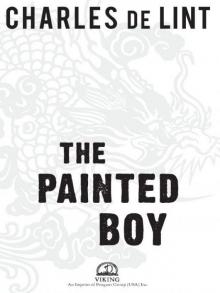 The Painted Boy
The Painted Boy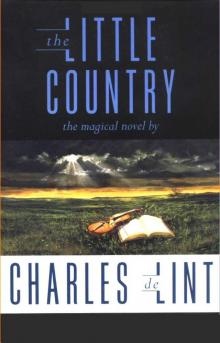 The Little Country
The Little Country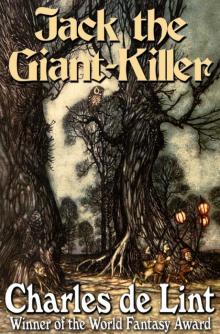 Jack of Kinrowan: Jack the Giant-Killer / Drink Down the Moon
Jack of Kinrowan: Jack the Giant-Killer / Drink Down the Moon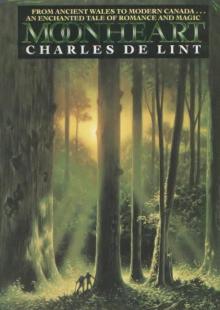 Moonheart
Moonheart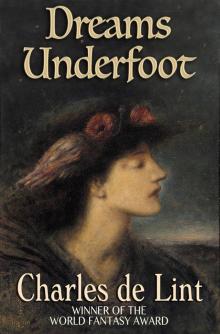 Dreams Underfoot
Dreams Underfoot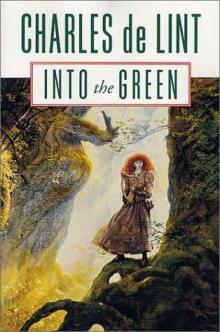 Into the Green
Into the Green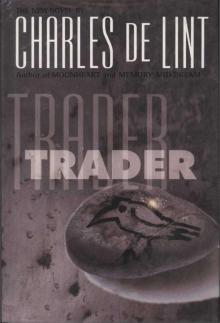 Trader
Trader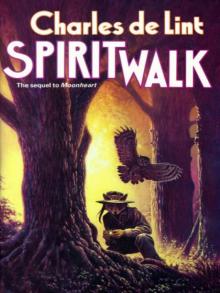 Spiritwalk
Spiritwalk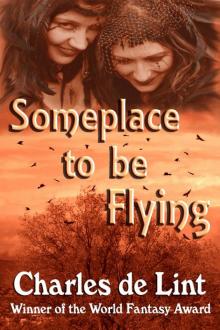 Someplace to Be Flying
Someplace to Be Flying Jack in the Green
Jack in the Green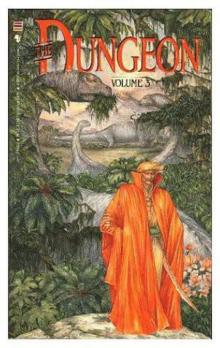 The Valley of Thunder
The Valley of Thunder Out of This World
Out of This World The Cats of Tanglewood Forest
The Cats of Tanglewood Forest Seven Wild Sisters
Seven Wild Sisters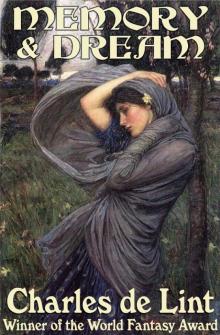 Memory and Dream
Memory and Dream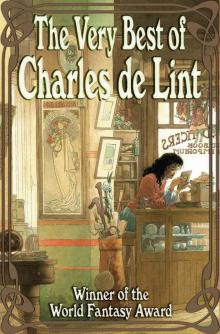 The Very Best of Charles De Lint
The Very Best of Charles De Lint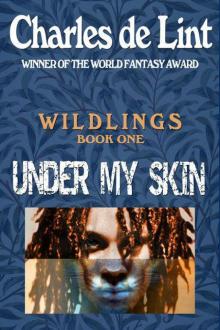 Under My Skin
Under My Skin Forests of the Heart
Forests of the Heart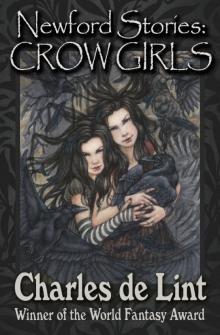 The Newford Stories
The Newford Stories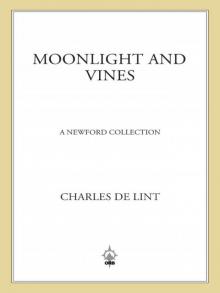 Moonlight and Vines
Moonlight and Vines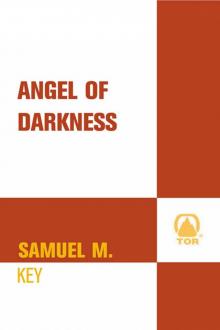 Angel of Darkness
Angel of Darkness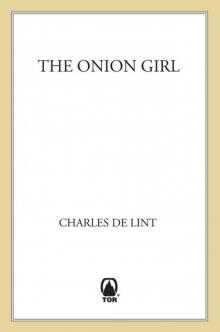 The Onion Girl
The Onion Girl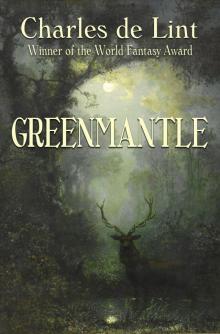 Greenmantle
Greenmantle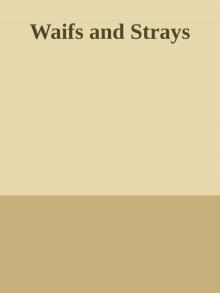 Waifs And Strays
Waifs And Strays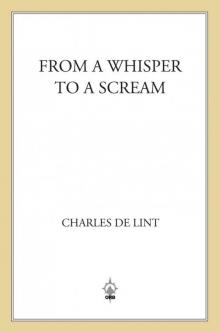 From a Whisper to a Scream
From a Whisper to a Scream Over My Head
Over My Head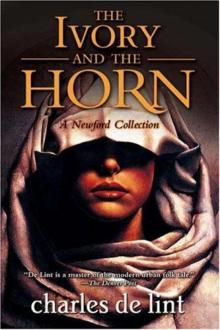 The Ivory and the Horn n-6
The Ivory and the Horn n-6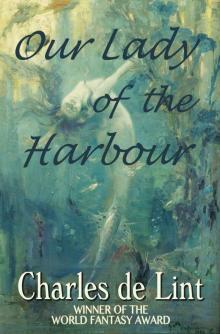 Our Lady of the Harbour
Our Lady of the Harbour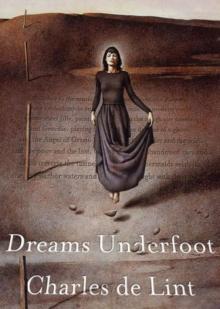 Dreams Underfoot n-1
Dreams Underfoot n-1 Jack the Giant-Killer (Jack of Kinrowan Book 1)
Jack the Giant-Killer (Jack of Kinrowan Book 1)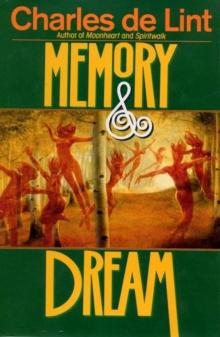 Memory and Dream n-5
Memory and Dream n-5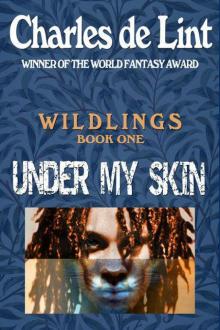 Under My Skin (Wildlings)
Under My Skin (Wildlings)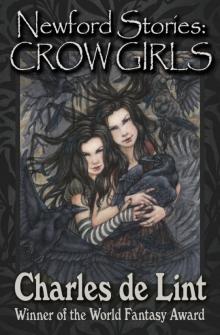 Newford Stories
Newford Stories The Wind in His Heart
The Wind in His Heart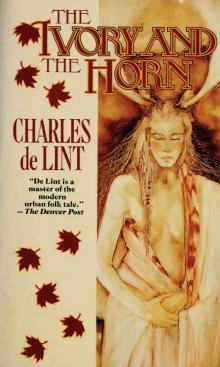 Ivory and the Horn
Ivory and the Horn